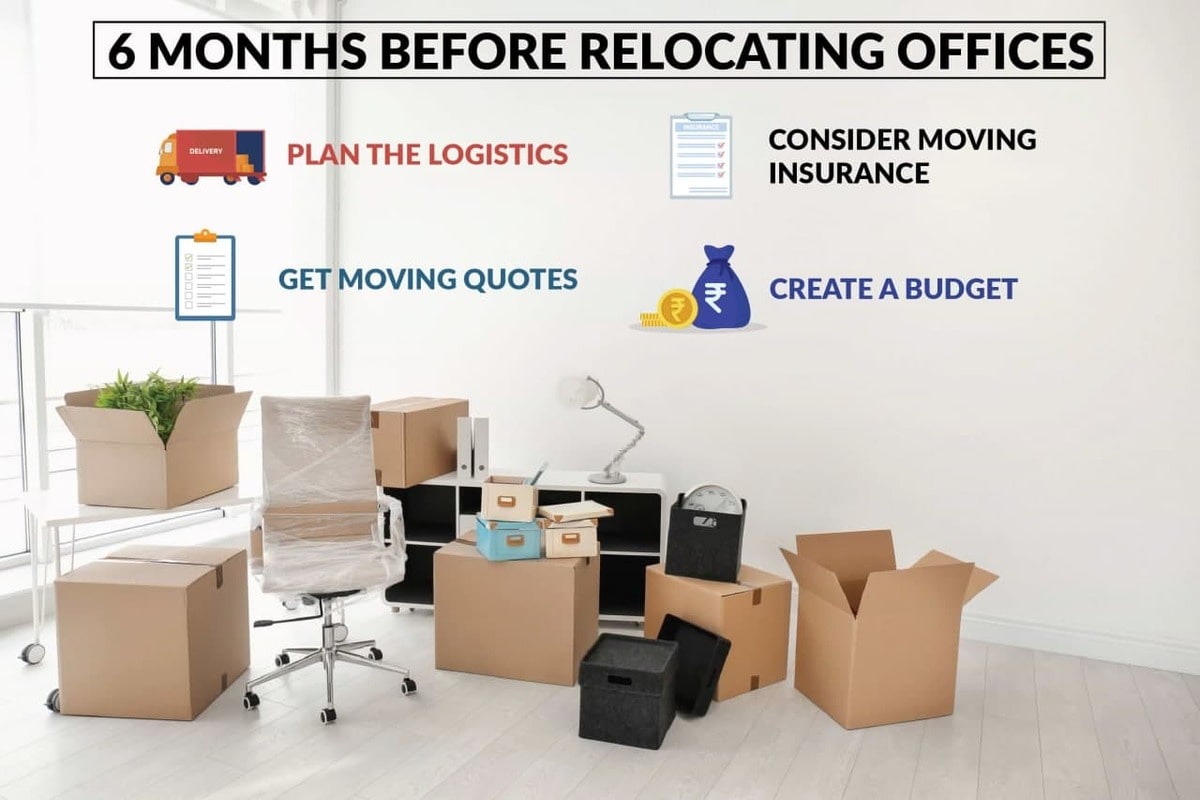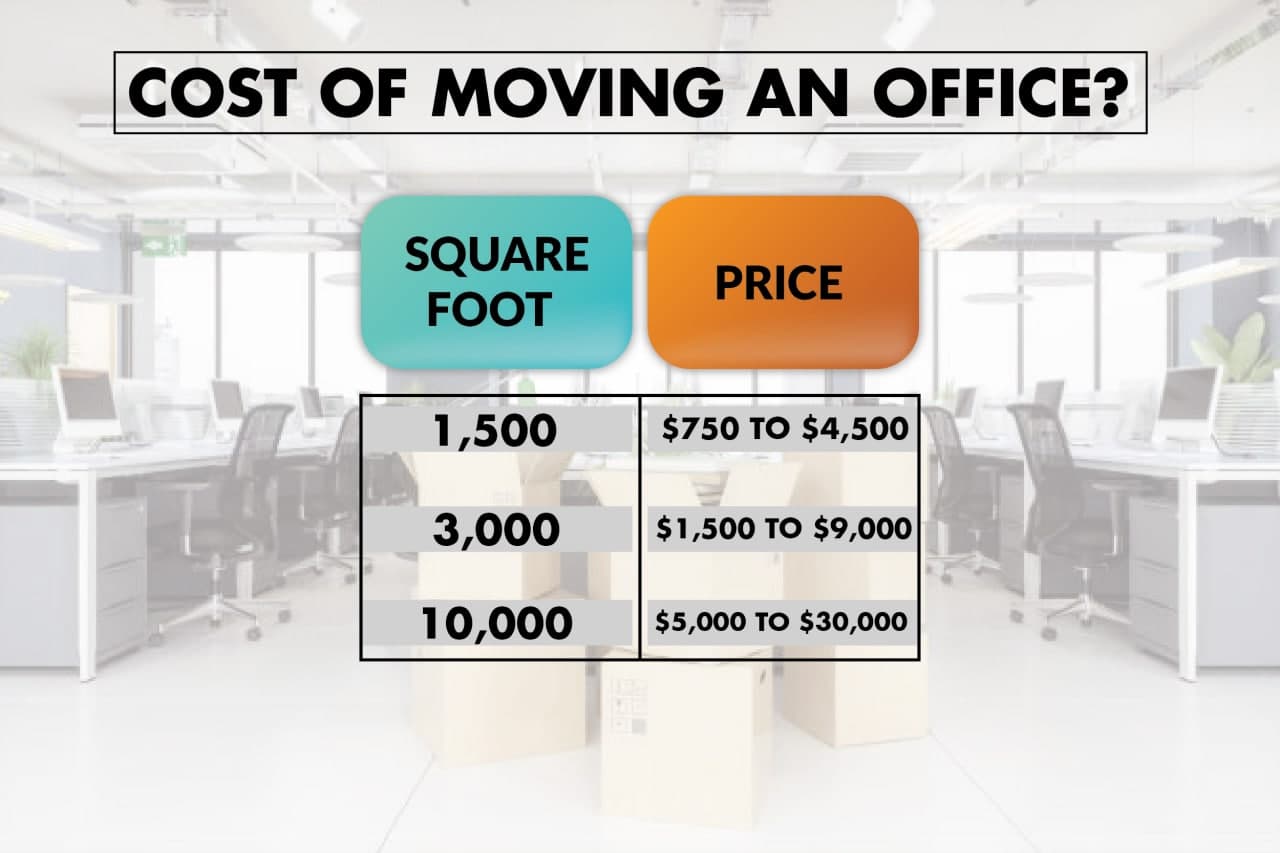6 Months Before Relocating Offices
Plan the Logistics
How to prepare for moving? Consider your current lease. Are you expected to pay a fee if you leave your lease a little early? Do you need to deal with any broken light fittings or damaged paint? Remember that some paint may become scratched during the move. You may, therefore, need to prepare for this.
Get Moving Quotes
It’s now time for you to get a few quotes from local moving companies. But, first, consider your budget and try to find a company that works within your budget.
Compare the cost of moving from at least 3-4 companies. This will give you a general idea of how much the move may cost. Then, work with the moving company that you like the look of the most. Do they offer you everything you need? Are there any additional services that you have not yet considered?
Make sure you don’t automatically opt for the cheapest quote. This is because the mover may not offer you exactly what you’re looking for. They may be the cheapest around, but they may fail to deliver good quality customer service. Companies usually have low prices for a reason. Make sure you do your research and eliminate those companies that are too cheap.
Consider Moving Insurance
Do you need moving insurance? If you use machinery or a piece of equipment to keep your business running, you may need this type of insurance. Why not choose a coverage that is higher than the typical industry standard?
At the time of writing, this standard means you will receive approximately $0.60 per pound of equipment . In other words, if your office chair weighs 10 pounds, you will receive $6.00.
If this does not sound enough, then opt for higher insurance coverage. It may cost more, but it can ensure that you receive more compensation. Finally, get the peace of mind you need so you can move to your new office without worry.
Create a Budget
When planning an office move, creating a budget will help to prevent you from spending too much money. If you have a budget, you can also see where you can save some money. For example, you may want to hire office moving services to pack your equipment for you, but your employees could do it instead. Try not to give your employees too much to do on top of their regular work as they may find it hard to juggle everything.
When you choose to create a budget, make sure that you list everything you need to account for. Rather than simply adding ‘Removal company,’ write what services you want to pay for and how much you’re willing to pay for them. You may also want to consider altering the budget allowance for each section from time to time while working with the same overall budget.
For example, your budget may look a little like this:
- Moving materials: $300
- New Wi-Fi set up $400
- Decorating the old office: $750
But you may have to make a few changes at some point so your budget could end up looking like this:
- Moving materials: $450
- New Wi-Fi set up $400
- Decorating the new office: $600
Budgets can and do change over time, so it’s important to be prepared for it. Below are other things to do when making a budget.
Create or Download a Template:
If you don’t know where to start, you can create a template of what you need to pay for to facilitate your office move. If you can’t make it, download it online. There are several templates you can use as a guide.
Add Extra Services and Charges:
When shifting offices, you might need to disconnect your computers and other pieces of equipment. If your moving company cannot handle it, you might need to hire technicians.
This is an extra service and should be factored into your budget. If you have sensitive equipment that requires special transportation, your office movers may charge you for it. So, include that too.
Add Existing Office Repairs:
Repairs may already be in your office move in checklist. You should also add it to your budget. However, check your lease or rent agreement to see who handles the repairs, you or the landlord.
Marketing Costs:
You may want your customer to know you are relocating offices, so plan for marketing costs. Ensure you make an office relocation announcement ahead of time.
Early Lease Termination:
Another office moving cost to consider is early lease termination. If you are leaving before your lease expires, you may have to pay the penalty, depending on the agreement you signed.
With a workable budget, you will focus more on what’s on your moving to-do list and reduce stress. In addition, if your financial plan is realistic, moving will feel like another business venture rather than facing the unknown.
Create a Planning Team
Creating a planning team will ensure that more gets done. When planning an office move, you need to make sure you’re on top of everything. There is so much to do during and immediately after an office move. This is why you need to get on top of everything.
Do you need to involve upper management? Or can you deal with it all yourself? Who is going to help you with the whole process? Who isn’t going to be involved? Work out who will help and what they’re going to do. Ensure they know what you expect of them throughout the moving process.


